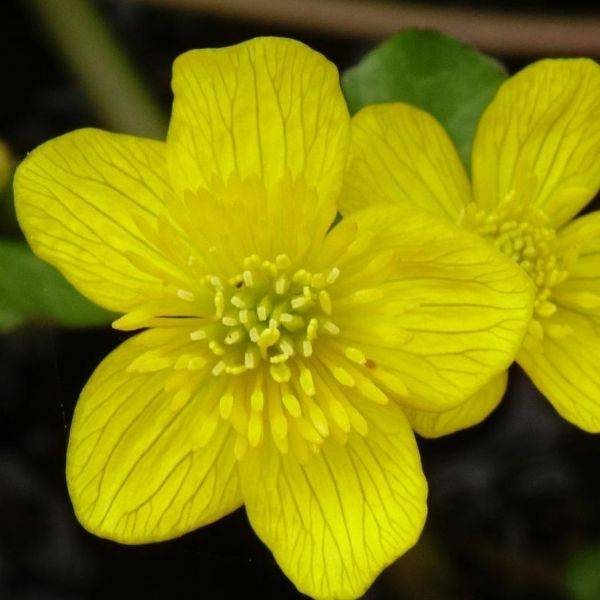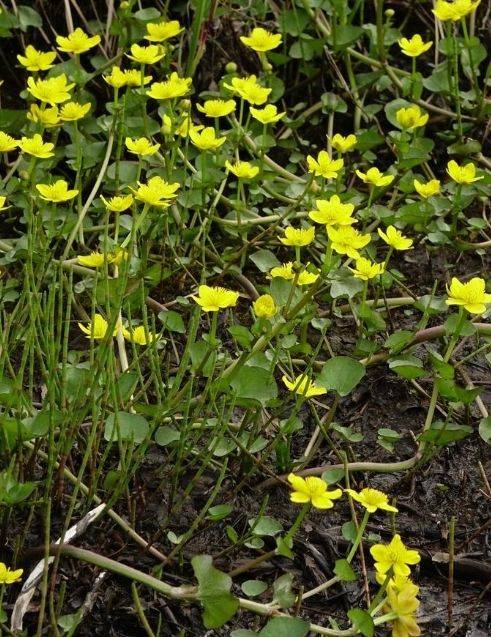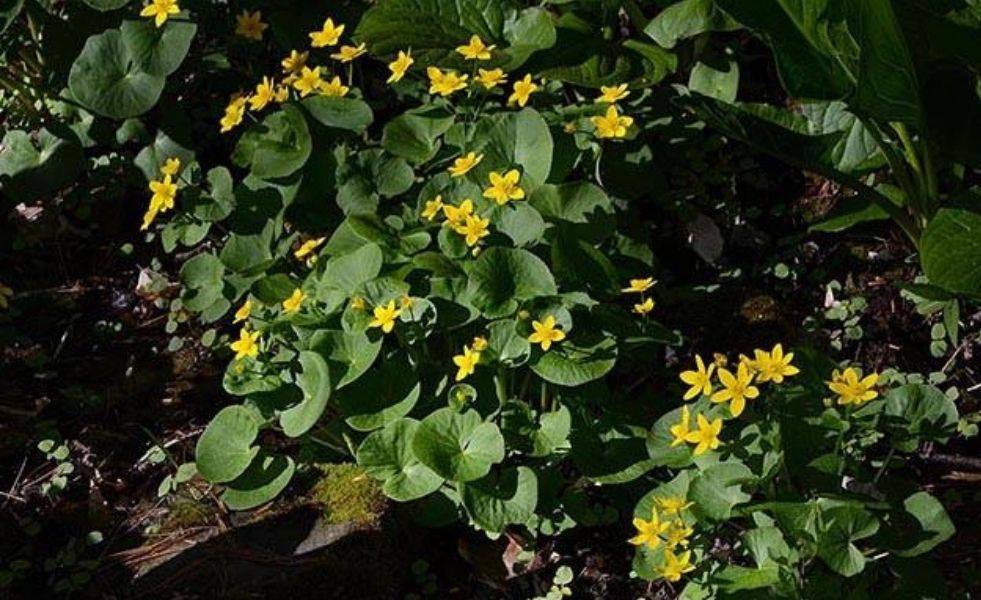Marsh Marigold
- Iñupiaq name: Unavailable
- Family: Ranunculaceae
- Scientific name: Caltha palustris
- Distinguishing characteristics: Mounded 1-2 foot tall herbaceous plant with a thick, hollow, branched stem. Green leaves are heart shaped and sparse. Striking shiny yellow flowers have 5 yellow sepals with a greenish center resembling a buttercup.
- Similar species: Marsh marigold looks similar to another poisonous plant, snow buttercup - since both produce five yellow petals, they are difficult to distinguish. Your best bet in identification is to look at the height of the plant; marsh marigold grows tall on long stems, while snow buttercup grows to be only a few inches tall.
- Habitat: Submerged in ponds or very moist areas, often found on banks of streams.
- Best time to harvest: Greens are best gathered in early spring when the flowers are still wrapped tight in their round, button-like buds.
- Uses: The long white roots are eaten boiled. Leaves can ONLY be eaten when cooked, but must be boiled with several water changes, as they are highly poisonous when raw.

Photo via Alaska Wildflowers

Photo via Alaska Wildflowers

Photo by James Reveal
